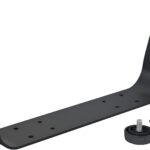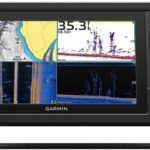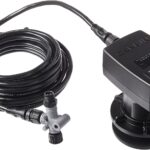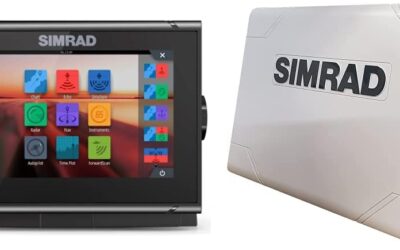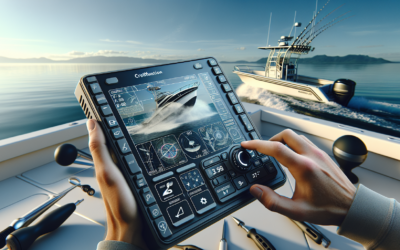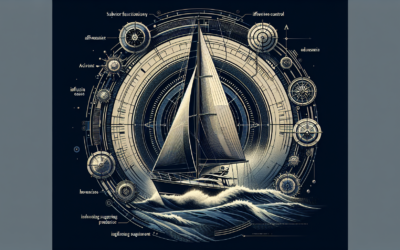If you’re an avid angler looking to level up your fishing game, then night fishing with fish finders is a technique you need to explore. Whether you’re a beginner or a seasoned pro, fishing under the cover of darkness offers a unique challenge and can yield some incredible results. But how can you maximize your chances of success in low light conditions? This article will provide you with valuable tips and insights on using fish finders during night fishing expeditions. Get ready to cast your line, navigate the darkness, and reel in your next big catch with confidence!
1. Choosing the Right Fish Finder
1.1 Understand the Basics of Fish Finders
When it comes to choosing the right fish finder for night fishing, it’s important to understand the basics of how these devices work. Fish finders use sonar technology to detect and locate fish underwater. They send out sound waves that bounce off objects in the water, including fish, and then translate those echoes into images on the fish finder’s display screen. By understanding how this technology works, you can make an informed decision when choosing the right fish finder for your night fishing adventures.
1.2 Consider Low Light Capabilities
One crucial factor to consider when selecting a fish finder for night fishing is its low light capabilities. Since you’ll be fishing in low light conditions, you’ll want a fish finder that has a bright and easily readable display screen. Look for models with backlit displays and high-resolution screens that provide excellent visibility, even in the dark. Additionally, some fish finders come equipped with night mode settings, which optimize the screen display for improved visibility at night.
1.3 Opt for Portable and Waterproof Fish Finders
Another important consideration when choosing a fish finder for night fishing is its portability and waterproof features. Night fishing often requires moving around, exploring different spots, and changing locations to find the best fishing grounds. Therefore, it’s beneficial to have a portable fish finder that can easily be transported from one spot to another. Additionally, since you’ll be fishing in an environment with water, it’s essential to choose a fish finder that is waterproof to ensure its durability and functionality even in wet conditions.
2. Preparing Your Gear for Night Fishing
2.1 Organize and Pack Essential Equipment
Before heading out for a night fishing trip, it’s crucial to organize and pack all the essential equipment you’ll need. Make a checklist of items such as fishing rods, reels, tackle boxes, bait, fishing line, and any other necessary tools. Organize your gear in a way that is easily accessible and allows you to quickly locate and use what you need during the night. Proper organization and packing will save you time and help ensure a smooth and enjoyable night fishing experience.
2.2 Check and Charge Batteries
Night fishing often involves using various electronic devices such as fish finders, headlamps, and navigation tools. To avoid any unpleasant surprises or technical difficulties during your fishing trip, always check and charge the batteries of these devices beforehand. Ensure that you have spare batteries or a portable charger if necessary. By doing so, you’ll have a reliable power source throughout the night, allowing you to fully utilize your fishing gear and stay safe in low light conditions.
2.3 Use Appropriate Fishing Line and Lure
Choosing the right fishing line and lure is essential for successful night fishing. Since visibility is reduced in low light conditions, it’s advisable to use a fishing line with a high visibility color, such as neon green or fluorescent yellow. This will make it easier for you to detect any line movement or bites. Additionally, opt for lures that have reflective or glow-in-the-dark properties. These types of lures will attract fish and increase your chances of getting a bite, even in the dark.
3. Setting Up Your Night Fishing Spot
3.1 Scout Suitable Locations During Daytime
To maximize your chances of catching fish at night, it’s recommended to scout suitable fishing locations during the daytime. Visit the area you plan to fish in advance and take note of any potential spots that look promising. Look for areas with underwater structures, such as rocks, submerged trees, or drop-offs, as these can attract fish. Also, pay attention to any signs of baitfish or other wildlife activity, as this can indicate the presence of predator fish. By scouting the area during the day, you’ll have a better idea of where to set up your night fishing spot.
3.2 Use Navigation Tools and Markers
Navigating in the dark can be challenging, especially in unfamiliar waters. To help you find your way and locate your fishing spot, use navigation tools and markers. GPS devices, handheld compasses, or smartphone apps with navigation features can be valuable tools for night fishing. Markers such as buoys or reflective tape on rocks or trees near your fishing spot will also serve as helpful guides to ensure you can safely return to your spot and avoid any obstacles or hazards.
3.3 Consider Water Depth and Structure
When setting up your night fishing spot, consider the water depth and structure. Different fish species have different preferences when it comes to their habitats and feeding patterns. Some fish prefer shallow waters near the shore, while others inhabit deeper areas or structures such as drop-offs, weed beds, or submerged logs. By understanding the water depth and structure where you are fishing, you can better target the species you’re after and increase your chances of a successful catch.
4. Understanding Fish Behavior at Night
4.1 Know the Feeding Habits of Fish at Night
Fish often exhibit different feeding habits at night compared to during the day. To increase your chances of catching fish during your night fishing trips, it’s important to understand their behavior in low light conditions. Many species of fish are more active and feed more aggressively at night. They may move shallower to hunt for prey, making them more accessible to anglers. Take the time to research the specific fish species you’ll be targeting and learn about their nocturnal feeding habits.
4.2 Use Moon Phases and Weather Conditions to Your Advantage
Moon phases and weather conditions can have a significant impact on fish behavior and feeding patterns. Certain moon phases, such as the full moon or new moon, can trigger increased fish activity. Additionally, weather conditions such as overcast skies or light rain can make fish more active and willing to bite. Pay attention to these factors when planning your night fishing trips and strategize your fishing techniques accordingly.
4.3 Recognize Potential Obstacles and Hazards
Fishing in low light conditions can present unique challenges and hazards. It’s important to recognize and prepare for these potential obstacles to ensure a safe and enjoyable night fishing experience. Obstacles such as fallen branches, rocks, or submerged structures can pose a risk to boaters or anglers wading in the water. Consider using headlamps or other lighting devices to illuminate your surroundings and be cautious when navigating unfamiliar areas. By recognizing and avoiding potential hazards, you can focus on fishing and avoid any accidents or injuries.
5. Maximizing Visibility and Illumination
5.1 Use Headlamps and Task Lighting
Having adequate illumination is essential for night fishing. Use headlamps or task lighting to maximize visibility and effectively perform tasks such as tying knots, rigging lures, or unhooking fish. Headlamps are especially useful as they allow you to keep your hands free, enabling you to handle your fishing gear with ease. Opt for headlamps with adjustable brightness settings to accommodate different lighting needs and conserve battery life.
5.2 Choose Fishing Spots Near Artificial Lights
Another way to maximize visibility during night fishing is to choose fishing spots near artificial lights. These lights, such as streetlights or dock lights, can attract insects and baitfish, which, in turn, attract larger predator fish. Fishing near artificial lights increases your chances of encountering actively feeding fish and offers better visibility for both fishing and navigating.
5.3 Optimize Display Settings on Your Fish Finder
To enhance visibility and make the most of your fish finder, optimize its display settings for low light conditions. Adjust the brightness and contrast settings to ensure a clear and readable screen display. Some fish finders also offer color settings that can be adjusted to optimize the visibility of different objects, such as fish arches or underwater structures. Experiment with the display settings to find the combination that works best for your night fishing needs.
6. Utilizing Fish Finder Features at Night
6.1 Adjust Sensitivity and Noise Filters
Fish finders often come with sensitivity and noise filter settings that can be adjusted to better detect fish and distinguish them from background clutter or noise. Experiment with different sensitivity levels and noise filter settings to find the optimal configuration for your night fishing trips. Keep in mind that low light conditions may require higher sensitivity settings to ensure efficient fish detection.
6.2 Utilize Color Displays and Target Separation
Take advantage of the color display feature on your fish finder to differentiate between various objects underwater, such as fish, structures, or the bottom contour. Adjust the color settings to highlight fish targets or make them more easily distinguishable from other objects. Additionally, target separation settings allow you to see individual fish or structures more clearly, even when they are close together. Utilize these features to maximize the effectiveness of your fish finder during night fishing.
6.3 Take Advantage of Side Imaging and Down Imaging
Some advanced fish finder models offer side imaging and down imaging capabilities, which provide detailed views of the underwater environment. Side imaging allows you to scan a wider area on both sides of your boat, while down imaging provides a clear picture of structures and fish directly beneath your boat. Utilizing these features can give you a better understanding of the underwater landscape and the distribution of fish, helping you target specific areas for a successful night fishing experience.
7. Understanding Sonar Readings in Low Light
7.1 Interpret Sonar Returns and Fish Arches
Interpreting sonar returns and fish arches is crucial for understanding what’s happening beneath the surface during night fishing. Sonar returns appear as colored or grayscale representations on the fish finder’s screen, indicating the presence of objects or fish. Fish arches, in particular, are a common representation of fish on the display, appearing as curved lines. Learning to identify different shapes and sizes of fish arches will help you determine the size and depth of the fish, enhancing your ability to target the right areas for a successful catch.
7.2 Differentiate Between Fish, Structure, and Bottom Contours
When analyzing sonar readings, it’s essential to differentiate between fish, underwater structures, and the bottom contour. Fish will appear as individual targets or arches, while structures and the bottom contour will exhibit different shapes and patterns. Familiarize yourself with the typical appearances of fish, structures, and bottom contours on your fish finder’s display screen to accurately identify and locate fish during your night fishing trips.
7.3 Analyze Water Temperature and Oxygen Levels
Sonar readings can also provide valuable information about water temperature and oxygen levels. Different fish species have preferred temperature ranges and oxygen requirements. By analyzing the sonar readings, you can identify areas with suitable water conditions for your target fish species. Look for temperature gradients or sudden changes in oxygen levels that indicate potential fishing hotspots. This information will help you focus your efforts on areas where fish are more likely to be present.
8. Night Fishing Techniques with Fish Finders
8.1 Slow Down Your Presentation and Retrieve
Fish tend to be more sluggish at night, so adjusting your fishing techniques accordingly can increase your chances of success. Slow down your presentation and retrieve to give fish ample time to notice and strike your bait or lure. Fish finders will help you monitor fish activity and adjust your technique if necessary. If the fish are not responding to fast retrieves, try a slow and steady approach to entice bites.
8.2 Try Different Depths and Vary Your Lure Speed
Fish can be found at different depths during night fishing, so it’s crucial to experiment with different depths and vary your lure speed. Use your fish finder to locate fish at specific depths and adjust your lure accordingly. Additionally, varying your lure speed can mimic different baitfish behavior and trigger fish to strike. By being versatile in your approach, you increase your chances of presenting the right lure at the right depth to entice a bite.
8.3 Pay Attention to Fish Finder Alarms and Signals
Fish finders often come equipped with alarms and signals that notify you when fish are detected or when you’re in a specific depth range. Pay close attention to these alerts as they can be valuable indicators of fish activity. Utilize the alarms and signals to stay informed and adjust your fishing technique accordingly. If you notice consistent fish activity in a particular depth range, focus your efforts in that area for a higher chance of success.
9. Safety Precautions for Night Fishing
9.1 Always Wear a Personal Floatation Device
Safety should always be a top priority when night fishing. Remember to wear a personal floatation device (PFD) at all times, especially when boating or fishing in open waters. PFDs can save lives in the event of an accident or unexpected circumstances. Choose a PFD that is comfortable and specifically designed for fishing activities to ensure maximum safety and freedom of movement during your night fishing adventures.
9.2 Inform Someone About Your Night Fishing Plans
Before heading out for a night fishing trip, make sure to inform someone about your plans. Share details such as your fishing location, estimated return time, and any other relevant information. This ensures that someone knows where you are and can take appropriate action in case of an emergency. Providing this information is crucial for your safety and peace of mind during your night fishing excursions.
9.3 Carry Emergency Equipment and Communication Devices
In addition to wearing a PFD and informing someone about your plans, it’s vital to carry emergency equipment and communication devices. Pack a first aid kit, a whistle, a flashlight, and a fully charged mobile phone or marine radio in case you need to call for help. These items can be lifesavers in emergency situations and ensure that you have the means to communicate with others and seek assistance if needed.
10. Other Tips and Tricks for Night Fishing
10.1 Experiment with Glow-in-the-Dark Lure and Bait
To increase your chances of attracting fish in low light conditions, experiment with glow-in-the-dark lures and bait. These types of lures and bait are designed to emit a phosphorescent glow underwater, making them more visible to fish. By using glow-in-the-dark options, you can enhance the visibility of your presentation and draw the attention of curious fish.
10.2 Use Scents and Attractants to Enhance Bites
Fish rely heavily on their sense of smell, especially at night when visibility is limited. Incorporate scents and attractants into your bait or lure to enhance its effectiveness. By adding scents that mimic the natural prey of the fish you’re targeting, you can entice more bites and increase your chances of a successful catch. Consider using scented soft plastics, scented spray-on attractants, or natural bait options to attract fish in low light conditions.
10.3 Keep Track of Successful Fishing Spots and Techniques
Lastly, keep track of successful fishing spots and techniques to improve your night fishing skills over time. Use a fishing journal or a mobile fishing log app to record information such as the location, time of day, moon phase, weather conditions, and the fish you caught. This valuable information will help you identify patterns and trends that contribute to successful night fishing. By continually learning from your experiences and adapting your approach, you’ll become a more skilled and successful angler in low light conditions.
Remember, night fishing with fish finders can be an exciting and rewarding experience. By following these tips and utilizing your fish finder effectively, you’ll increase your chances of catching fish and have an unforgettable time on the water. Stay safe, be prepared, and enjoy the adventure of night fishing!

